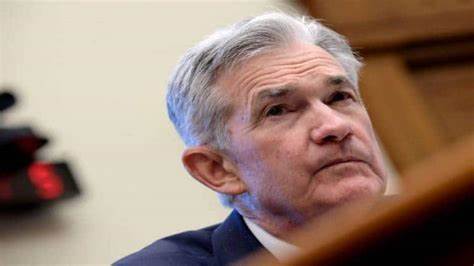Goldman pencils in first Fed rate cut for second quarter of 2024

Goldman pencils in first Fed rate cut for second quarter of 2024
Goldman Sachs Group Inc.’s economists are forecasting a scenario where the Federal Reserve initiates a series of interest rate reductions by the conclusion of June in the upcoming year. This projection, put forth by economists such as Jan Hatzius and David Mericle, outlines a methodical and periodic cadence of rate cuts from that juncture onward.
The anticipation of these rate cuts is grounded in economic analysis and assessments of prevailing conditions. Goldman Sachs’ economists expect the Federal Reserve to embark on a deliberate approach, with rate cuts being implemented incrementally at a quarterly frequency following the initial reduction.
This projection underscores the intricate and data-dependent nature of monetary policy decisions, where economists and policymakers evaluate various economic indicators, inflation trends, employment figures, and other pertinent factors to determine the optimal timing and magnitude of interest rate adjustments.
The decision to lower interest rates in this projection is influenced by the intention to normalize the federal funds rate, transitioning it from a restrictive level once inflation comes closer to the desired target. Goldman Sachs economists emphasized this in a note, highlighting the desire to address the inflation situation and adjust the rate accordingly.
As per their current forecast, Goldman Sachs expects the rate cuts to commence in the second quarter of 2024. In the near term, they anticipate that the Federal Open Market Committee (FOMC) will not implement a rate hike next month. Furthermore, they anticipate that the FOMC will conclude, by the November meeting, that the trend in core inflation has decelerated sufficiently to make an additional rate hike unnecessary.
This projection provides insight into Goldman Sachs’ view on the potential trajectory of interest rate adjustments by the Federal Reserve. Economic conditions and factors impacting inflation will continue to play a crucial role in shaping the central bank’s decisions regarding monetary policy in the coming months.
Goldman Sachs economists acknowledge that the motivation for cutting interest rates is not urgently driven by the need for normalization. They express the possibility of the Federal Open Market Committee (FOMC) choosing to maintain the status quo, suggesting that a significant risk exists that the FOMC might opt to keep interest rates unchanged.
While the economists currently estimate a reduction of 25 basis points (0.25%) per quarter, they also highlight their uncertainty about the exact pace of rate cuts. This underlines the dynamic and data-dependent nature of monetary policy decisions, where economic indicators and conditions play a pivotal role.
Recent data indicated that U.S. inflation had increased at a rate of 3.2%, which was slower than expected. The core consumer price index, which excludes energy and food costs, exhibited an annual pace of 4.7%. These figures provide insights into the ongoing inflation dynamics that will influence the Federal Reserve’s decision-making process.
The Goldman Sachs economists’ assessment reflects the complexity and potential variability in monetary policy actions, as central banks like the Federal Reserve continuously evaluate economic indicators, inflation trends, and other factors to determine the appropriate course of action regarding interest rates.
In March 2022, the Federal Reserve embarked on a process of measured rate increases, signaling their intention to gradually elevate the target range for the benchmark interest rate. Their aim was to achieve a range spanning from 5.25% to 5.5%. This move was part of a strategic approach to manage economic conditions and inflation.
Goldman Sachs’ economists, including noted experts such as Jan Hatzius and David Mericle, have formulated a projection that envisions the Federal Reserve’s interest rate trajectory over time. According to this projection, the federal funds rate—a key determinant of borrowing costs and financial conditions—will eventually reach a stabilization point. Goldman Sachs anticipates this stabilization to occur within a range of 3% to 3.25%.
This projection conveys the view that the Federal Reserve will gradually steer the target interest rate downward from the initially elevated levels set in 2022. The goal of this adjustment is to align with prevailing economic conditions and inflation targets. By bringing interest rates to a lower range, the Federal Reserve seeks to facilitate a more conducive environment for economic growth, investment, and inflation management.



